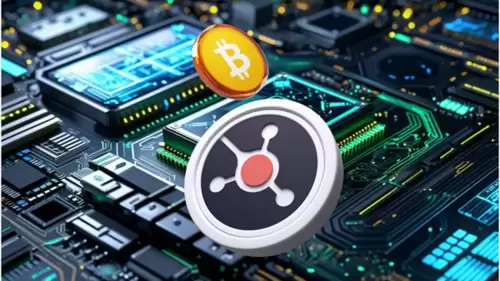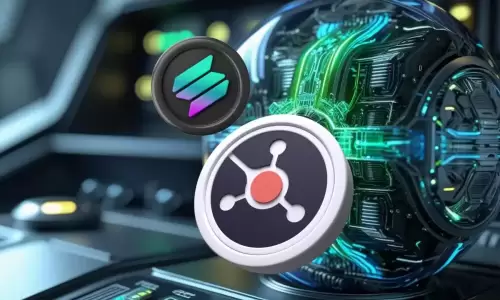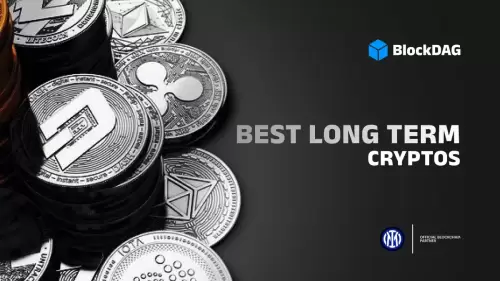 |
|
 |
|
 |
|
 |
|
 |
|
 |
|
 |
|
 |
|
 |
|
 |
|
 |
|
 |
|
 |
|
 |
|
 |
|
Cryptocurrency News Articles
Alpenglow Slashes Solana Transaction Final Latency with 100x Reduction
May 20, 2025 at 09:00 pm
Anza's Alpenglow proposal introduces Solana's most significant protocol upgrade, replacing legacy systems with Votor and Rotor to slash transaction finality to 100-150ms

Anza's Alpenglow proposal introduces Solana's most significant protocol upgrade yet, scrapping legacy systems and introducing Votor and Rotor to slash transaction finality to 100-150ms. This promises a three-pronged improvement in speed, security, and scalability by 2025.
After months of development by the Anza research team, Alpenglow, the largest proposed upgrade in Solana's history, has been unveiled.
This new consensus protocol replaces Solana's legacy mechanisms, Tower BFT and Proof of History (PoH), with two innovative components: Votor and Rotor.
Votor streamlines block finalization, achieving consensus in a single round of voting if 80% of stakeholders participate, or two rounds with 60% participation, running both modes concurrently for optimal speed.
Rotor enhances data dissemination by streamlining the Turbine model, reducing network hops with a single-layer relay system and leveraging erasure-coded data propagation for faster, more resilient transmission.
Alpenglow abandons gossip-based communication for direct messaging, crucial for minimizing latency. As 65% of Solana's stake is within 50ms of Zurich, finalization times drop to 100-150ms—a 100x improvement from the current 12.8 seconds.
This upgrade also aims to address historical bottlenecks like leader overload by optimizing bandwidth usage across nodes. Alpenglow introduces repair and re-sync methods, rendering the network more robust against outages—a persistent challenge for Solana, which faced multiple downtimes in 2022-2024 due to validator congestion.
Impact of Alpenglow on Solana's Performance and Ecosystem
Alpenglow's implementation promises to transform Solana's operational efficiency, positioning it as a leader in blockchain performance. The drastic reduction in transaction finality to 100-150ms brings Solana's speed on par with Web2 infrastructure, enabling real-time applications like gaming, high-frequency trading, and mobile payments.
This aligns with Solana's vision of vertical performance scaling, contrasting Ethereum's rollup-centric approach. Rotor's optimization of data dissemination ensures that leaders no longer bottleneck the system, allowing Solana to handle its current 3,000 TPS more effectively, with the potential to scale toward 65,000 TPS.
The upgrade also strengthens Solana's security and resilience. Votor's dual-mode voting tolerates up to 20% adversarial and 20% non-responsive stake, a "20+20" model that ensures consistent finality even under degraded conditions.
However, Alpenglow won't fully eliminate outages, as Solana's reliance on a single validator client remains a vulnerability.
The Future of Solana with Alpenglow's Potential Adoption
If adopted later this year via the Solana Improvement Document (SIMD) proposal, Alpenglow could drastically shift the Layer-1 landscape.
The protocol's ability to finalize blocks in milliseconds positions Solana to compete directly with centralized systems, potentially capturing market share from Ethereum, which currently holds $77.15 billion in DeFi TVL. Solana's ecosystem, already thriving with $9 billion in TVL and 4.78 million daily active addresses, could see exponential growth, especially in performance-sensitive applications.
However, challenges remain. Solana's 2,000 validators raise centralization concerns compared to Ethereum's 800,000+, and its history of outages could undermine trust if Alpenglow fails to deliver.
If successful, Alpenglow could cement Solana's role as a high-performance blockchain, attracting institutional adoption and solidifying its $2 trillion market cap trajectory, potentially outpacing competitors like BNB Chain or TRON.
Disclaimer:info@kdj.com
The information provided is not trading advice. kdj.com does not assume any responsibility for any investments made based on the information provided in this article. Cryptocurrencies are highly volatile and it is highly recommended that you invest with caution after thorough research!
If you believe that the content used on this website infringes your copyright, please contact us immediately (info@kdj.com) and we will delete it promptly.





























































